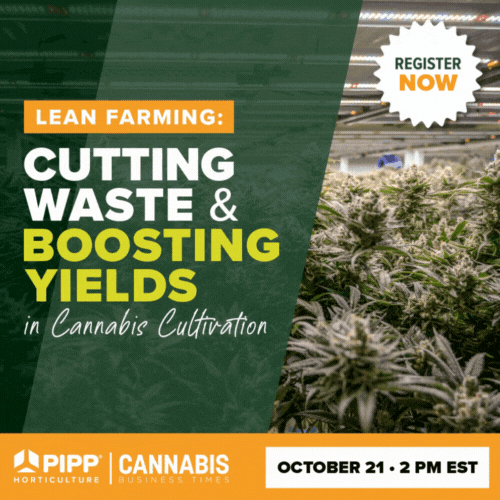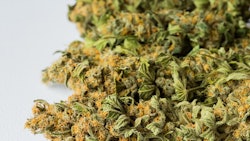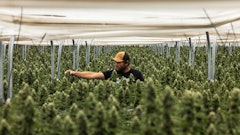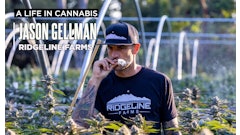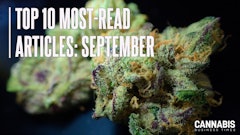
Indoor, outdoor, greenhouse or a combination: Glasshouse
Can you share a bit of your background and how you and your company got to the present day?
I started my career in the wine industry. I grew up in a wine region in British Columbia, Canada. I started in viniculture, growing grapes in the summertime as a teenager, and then worked for many different wineries in the region in my young adult years. There were more and more medical [cannabis] licenses being granted by Health Canada, and I transitioned from the wine world and working in cellars over to cannabis because I saw a huge opportunity to help a lot of people and add a ton of value to the marketplace. The products we were seeing weren’t that great, and it wasn’t safe and regulated, so the writing was on the wall that this was going to go fully legal and be culturally accepted. So, in the early 2000s, I transitioned from wine to cannabis.
Then, Sunniva actually found me. I was running my own greenhouse operations and they had interviewed a dozen growers in British Columbia. My legal counsel called me and said, “There’s a group headhunting, and they really need to meet you.” So, after a few meetings—I don’t want to say they hired me on the spot, but they brought me in as a consultant at first to help with design, and then that accelerated into a management position.
What tool or software in your cultivation space can you not live without?
It’s basically a programmable logic computer that’s cloud-based. It manages the climate control system, the lighting, your screens, irrigation—basically everything that happens inside of the greenhouse. It’ll integrate with our bench movement system, but it doesn’t directly control the bench system. It’s our overarching software that manages everything that happens within the greenhouse.
What purchase of $100 or less has most positively impacted your business in the past six months?
It may seem stupid or simple, but litmus paper is a really handy tool [for testing pH]. Digital sensors can sometimes be faulty or can give inaccurate readings. Litmus paper [costs] pennies, and I always insist that our growers keep that on their desk because it is a failsafe against any technological issue. It is a tried-and-true mechanism for testing the pH of nutrient solution if it’s not too dirty, because it is a color test. But it’s one of those things that is really, really valuable, and it’s almost free.
What cultivation technique are you most interested in right now, and what are you actively studying (the most)?
Right now, I’m really diving into the details of plant nutrition. We are lucky enough to have a lot of technology in our facilities, including a single-element feed system. So, what that means is we’re able to fertigate crops precisely from the individual mineral elements. With that ability, we can really dial in plant nutrition with the use of leaf-tissue analysis, as well as regular analytics on your fertilizer and nutrient solution. You [should] really dial in what these various crops need because there’s a lot of genetic variance in the cannabis plant. We don’t have standard varieties like in, say, vine crops or bedding plants. While that genetic diversity is great for consumers—for producers, it comes with the intrinsic challenge of how do you really dial in a plant? We’re doing that with a scientific approach, like I said, with leaf tissue analysis and a single-element feed system to really drive yield, but also, we’re finding plant disease is far mitigated when you really have plant nutrition honed right in.
How has a failure, or apparent failure, set you up for later success? Do you have a “favorite failure” of yours?
There’s a defining moment in my horticultural career that really set the path for what it is I’m doing. About five years ago in my own greenhouses up here in B.C., we switched to a single-bag fertilizer, and that was for ease of growers and for cost considerations. When we made that switch, initially we didn’t see much difference in the vegetative growing plants and even in the early generative phase, or flowering cycle. There wasn’t much of a difference, but at about four weeks, there was clearly what we later found out to be calcium deficiency with our house, and it was at that point that I really started to do some research on hydroponic plant nutrition—what is a complete fertilizer recipe, and how do you really steer crops and drive yield?
From that error in judgement of not providing complete nutrition to these plants by trying to save some cash and ease of operations, it really set the tone for the future of my horticultural career where I then got into mixing my own fertilizers and doing my own A/B tank recipes. We’re able to twist the knobs on these [cloud-based computer control] systems to really dial in these plants and drive yield and quality like never before. The difference in fertigation technologies now compared to 10 years ago—it’s almost unrecognizable because of cloud computing.
What advice would you give to a smart, driven grower about to enter the legal, regulated industry? What advice should they ignore?
The one thing that I would advise somebody is: Don’t cut corners when it comes to things like facilities and compliance. If you start to use some cheaper building materials to try to save some dollars here and there, typically, at the end of the day, you’re not going to get the results that you were hoping for.
And then inversely, what should they avoid? If you’re entering the legal industry, top to bottom, from your fire code compliance to everything you spray—in Canada, at least—it needs to have cannabis on the label. It needs to be approved for cannabis as a crop. It’s the same thing in the other regulated states. You can’t cheat the regulators by trying to do what you’ve always done, which may not be compliant. So, that is the crown jewel of any legal operation—your compliance.
How do you deal with burnout?
I really like to spend time with my family. When I’m not working or traveling for business, I love sunny days at the beach with my girls. We’re lucky enough to have a place at the local ski hill here in B.C., so that’s where we tend to spend our R&R time, either on the slopes or in the hot tub or wading in the warm lake in the summertime.
How do you motivate your employees/team?
In my experience, if people don’t want to work for you, that’s exactly what happens—they don’t work for you. They either don’t show up, they’re truant or tardy, or worse yet, they show up and they don’t give their best effort. This is such a fast-moving industry. There’s nothing but opportunity. People who start as janitors have moved on to be growers in huge facilities. You can inspire them with showing them what the road to success looks like, and it’s a lot of sweat equity, slugging it out. That’s what I did for years in the wine industry. I was just a little kid, and I had to prove to the older people working in that industry that I had what it took to do the hard work—it’s not glamorous—and prove that I was capable and smart enough to get the job done. I went from a vineyard rat to a sparkling wine maker. So, it’s really about inspiring people through success, in my opinion.
Also, give the people the tools to do their job well. There’s nothing worse than being asked something by your employer, but not having what you need to do it. Inspiring a collaborative effort in the workforce as well, is really great—building a team together. When I was running my own greenhouses, I used to spend a lot of time doing extracurricular activities. That’s kind of gone by the wayside now that I have a young family, but I like to consider everybody I work with my equal. There are no silos. In cannabis manufacturing, the executives are at the bottom of the pyramid and all the value-adders are at the top because they’re ultimately the ones who make our company successful. Anybody could go build a greenhouse down the road from us, the exact same facility, but if they don’t have the right people who are motivated inside of that facility, they’re going to fail.
What keeps you awake at night?
Short of my toddler, I would say there’s just a lot of opportunity in this fast-evolving industry. There’s nothing but possibilities for where this is going to go. We’re seeing, obviously, consolidation and scale approaching quicker than we expected. So, what keeps me awake at night is trying to stay focused on what the near-term goals are and how to accomplish some of those things, [like], “Get that glasshouse finished and loaded.” The near-term executables and the long-term vision are constantly swirling through my brain.
What helps you sleep at night?
I’ve been a medical patient for my whole adult life and I find that it’s not quite so simple as just indica or sativa, but there’s definitely a value in getting medicated to a point where you can slow that brain down just enough to be able to collect your thoughts [and] close out what you need to do for the day.
People often talk about work/life balance, and you have to realize that it’s more than just that. Exercise and human nutrition are probably the two most important things in anybody’s life, and they’re often overlooked for business opportunities. I’m guilty of this myself. Spending so much time traveling in the last 18 months, I’ve put myself second, and as an industry, we have to start to incorporate a healthy lifestyle as a part of everything it is we’re doing, and we’ll all be stronger.
Editor's Note: This interview has been edited for style, length and clarity.

